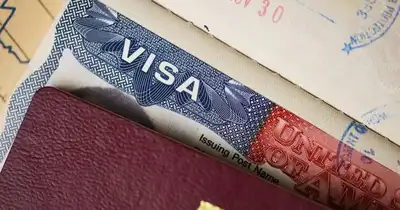
For decades, the United States has drawn the world’s brightest minds not just because of its top-tier universities, but also due to a relatively predictable visa system that allowed international students to stay for the duration of their studies.
Now, a proposed rule from the Department of Homeland Security (DHS) threatens to upend that assurance, replacing academic continuity with bureaucratic timers, and in the process, potentially disrupting the futures of over 4.2 lakh Indian students.The DHS proposal, currently under review by the Office of Management and Budget (OMB), seeks to impose fixed periods of stay for F, J, and I visa holders, categories that include students, exchange visitors, and foreign media representatives.
If approved, this change would mark a departure from the long-standing policy of granting stay based on academic engagement, known as “duration of status.”
Fixed dates, fluid anxiety
The core concern is not merely administrative; it is existential. Under current norms, students can remain in the US as long as they maintain full-time academic enrollment. The new framework would replace that flexibility with a firm expiration date on their visa, compelling students to apply for extensions, regardless of whether their programme is completed.
Rajiv S. Khanna, managing attorney at Immigration.com, told the TNN, “Currently, international students can stay in the US as long as they are maintaining their full-time student status in approved programs. This is referred to as ‘duration of status’. The Trump administration wants to change this to a predefined period of stay. With a fixed expiration date on their visa, international students would have to periodically apply for extensions.
This will create additional unnecessary delays, financial burden, and uncertainty for students. Considering that an average extension of status request can take a few months to process, these types of restrictive regulations will increase the uncertainty international students would face.”For Indian students, the largest cohort of international students in the US, the stakes are even higher. In 2024 alone, 4.2 lakh Indians enrolled in American institutions, according to a report by U.S.
Immigration and Customs Enforcement (ICE). The potential disruption could not only impact their academic timelines but also the broader Indo-US education corridor.
A rule revived from the past
Though fresh on the regulatory docket, this rule is not without precedent. A similar attempt was made in 2020 under the Trump administration, but it failed to clear the final hurdles. Its reappearance now has reignited concerns about the return of restrictive visa regimes under the guise of procedural updates.Compounding the anxiety is the possibility that the DHS may push the rule through as an interim final rule, effectively bypassing the usual public comment period and enacting it immediately. If that happens, institutions and students could find themselves scrambling to interpret and respond to a seismic policy change without adequate transition time.
Unlawful presence: A legal minefield
Legal experts warn that the proposal’s implications go far beyond reapplication fatigue.
A significant change would occur in how “unlawful presence” is calculated. At present, international students are not deemed unlawfully present unless a formal decision is issued by USCIS or an immigration judge. But under the new rule, a student who overstays the fixed period, even unknowingly, could begin accruing unlawful presence from the day their visa lapses.
Sector pushback and data contradictions
Higher education institutions across the US are voicing strong reservations.
Representatives argue that the policy is based on an exaggerated narrative of student overstays. In reality, the overstay rate for F, M, and J visas stood at just 3.6% in 2023, a fraction when compared to other visa categories.Coming at a time when Canada, the UK, and Australia are actively recalibrating their student visa regimes to attract international talent, the US’s move may signal a retreat rather than progress.
For thousands of Indian families planning higher education abroad, this new rule could introduce layers of complexity that tilt the scales toward alternative destinations.While the final contours of the regulation will only be known once it's published in the Federal Register, the underlying message is clear: America is reconsidering the terms under which it welcomes academic talent.
A clock ticking on certainty
What was once a visa system built on academic progression may soon be governed by expiration dates and reapplication cycles. For Indian students, who have long viewed the US as the gold standard in higher education, the proposed change represents more than a policy tweak. It is a fundamental shift in the academic contract, one that could redefine who chooses to study in America, and at what cost.
TOI Education is on WhatsApp now. Follow us here.

 19 hours ago
48
19 hours ago
48




























 English (US)
English (US)